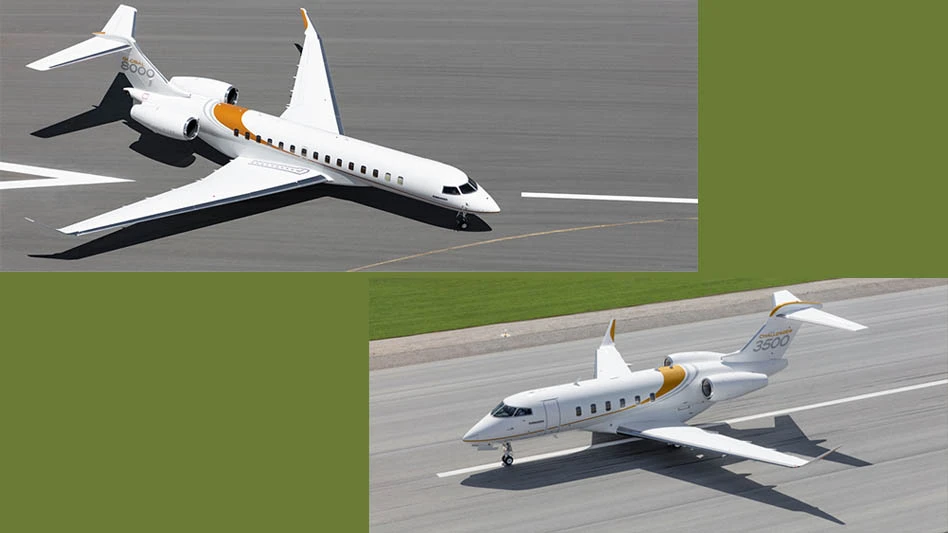
There's no denying that companies are feeling the pinch now due to a sluggish economy. In fact, 70% of aerospace industry representatives polled by the Performance Review Institute claim that the economy is having a direct impact on their business. Current challenges include volatile oil prices, a lack of credit approval for new equipment, and a global economic slowdown. However, most aerospace manufacturers have the upper hand when it comes to one thing that other industries are lacking: orders are still coming in, and shops are having no trouble finding parts to produce.
Experts predict that a budding demand for domestic and international air travel in emerging economies will help to drive future growth in the aviation industry. In addition, the increasing dominance of low-cost carriers, deregulation of airspace, and the growing popularity of global hubs (particularly in the Middle East) will have a positive effect on the aerospace sector.
Although the growth rate has slowed down recently, it doesn't mean the industry stopped growing. "We see several signals that yes, there is a slow down of [the aerospace sector's] growth, which was growing at quite a robust rate for the last three to four years, but there still is a large backlog of demand for commercial airplanes," says Tim Nichols, head of Global Aerospace and Defense Industry Marketing, Siemens PLM Software. "And so I think we're still going to see a fairly long, extended growth period, although it may plateau for the next year or so until we get a little economic balance - or at least more balance than we have today."
Where We're Headed
The Aerospace Industries Association (AIA) predicts that the overall industry should grow at slightly more than 2% in 2009. This rate is lower than in recent years, but still marks the fifth consecutive year of record sales. Datamonitor's "Aerospace & Defense: Global Industry Guide" mirrors this prediction, expanding it further by projecting a global A&D market worth $715.4 billion by 2012, an increase of 12.5% since 2007. These predictions reflect the fact that commercial airlines are moving toward new fleets that are long overdue. Parts are already on order and need to be completed in order to update the current fleets. According to Fitch Ratings, the Large Commercial Aircraft (LCA) backlog reached nearly 7,500 aircraft at the end of November 2008, which equates to more than 7.5 years of production at current rates.
On the defense side, military sales are forecast to rise from $54.7 billion to $57 billion, or 4.2% in 2009. Certain programs that are in place will continue, causing the defense side of the industry to change more slowly than others.
"In some cases, programs will be extended slightly, or stretched out a little bit," Nichols says. "But at the end of the day, these platforms and systems that the governments of the world need are still critical. So, that will still be very solid going forward as the systems are fielded to satisfy the needs of the world's governments."
According to Global Industry Analysts, Inc., the market for Command, Control, Communications, Computers, Intelligence, Surveillance and Reconnaissance (C4ISR) is expected to grow at 6.9% through 2010. In addition, the missile market is expected to register a compound annual growth rate of 6.5%. The largest product segment is aircraft products and services, which is projected to exceed $350 billion by 2014, according to Global Industry Analysts. Through 2015, demand for MRO services worldwide is expected to increase, mainly fueled by vigorous expansion in developing and emerging markets in Asia-Pacific, Latin America and Eastern Europe.
The United States is by far the world's largest aerospace and defense market, according to Global Industry Analysts, with revenues projected to be worth $298 billion by 2015. The budget for the U.S. defense market alone is more than $480 billion. Europe follows the U.S. with an approximate 27% share in the world's A&D market. Together, Europe and the U.S. account for more than 80% of global A&D revenues.
In civil aviation, AIA forecasts a 7.4% rise to $86 billion in 2009. However, business jet and aftermarket segments of civil aviation may be most at risk in the short term, due to the sub-prime credit crisis in the U.S. and its reverberation in the global financial markets.

Explore the January February 2009 Issue
Check out more from this issue and find your next story to read.
Latest from Aerospace Manufacturing and Design
- Bell awarded funding for X-plane build phase of SPRINT program
- Shaft coupling clamps
- #46 Lunch + Learn Podcast with SMW Autoblok
- Gleason Corp. acquires the Intra Group of Companies
- Thread milling cutter reduces cutting pressure, vibration
- Malaysia Aviation Group orders 20 more Airbus A330neo widebodies
- More displacement from space-tested piezo actuators
- Textron Aviation to bring its largest-ever lineup to 2025 EAA AirVenture





